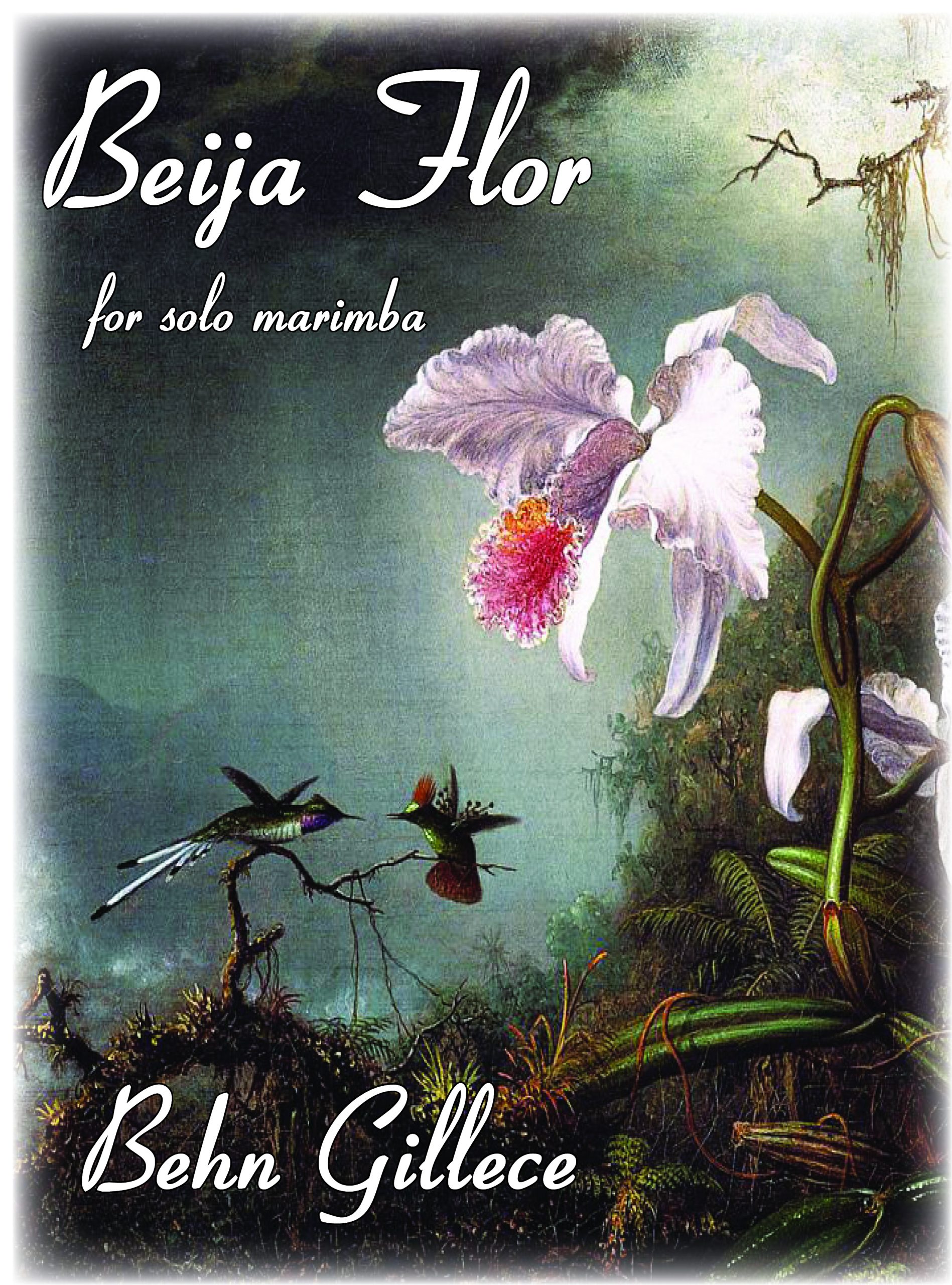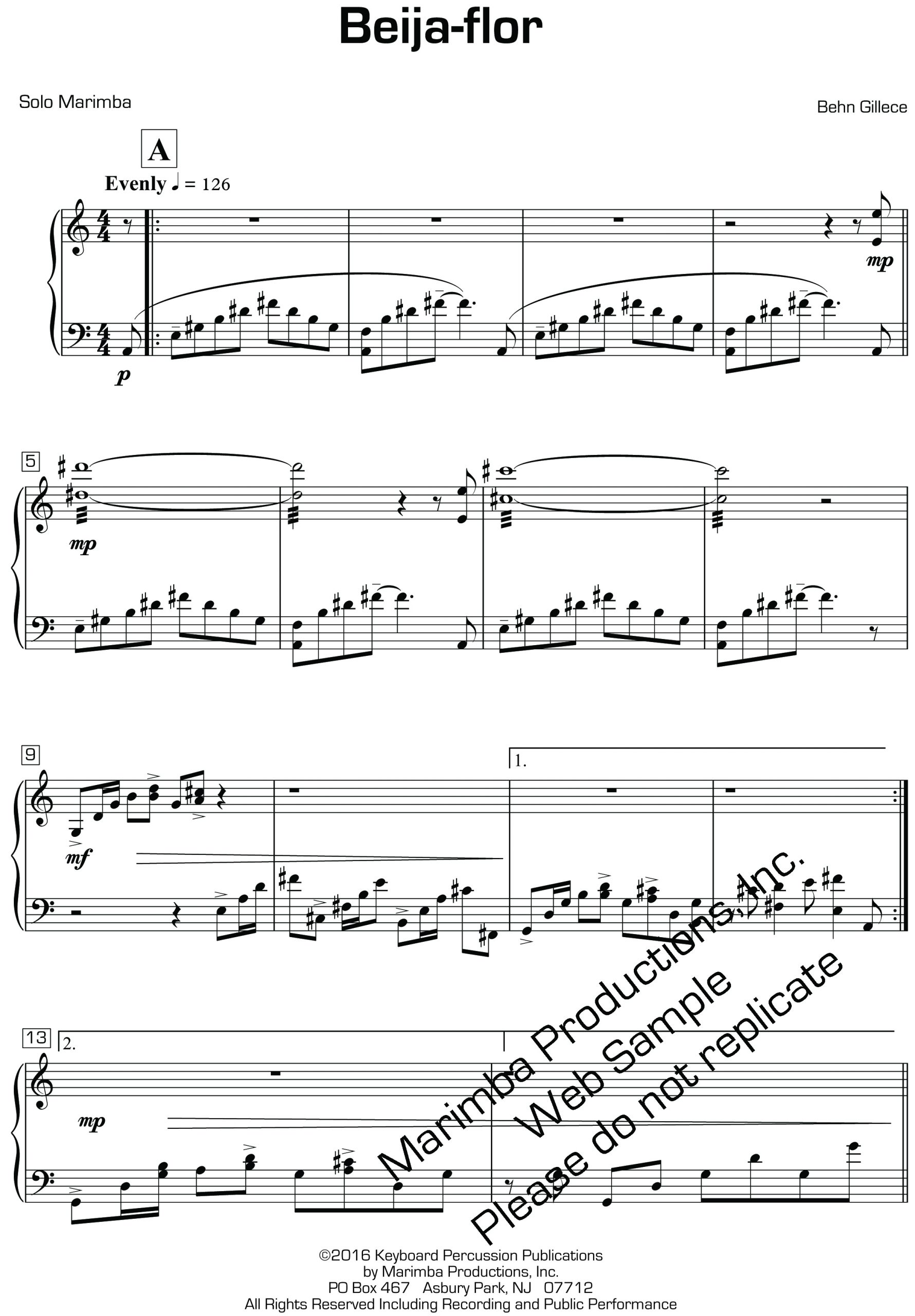The Brazilian-Portugese title Beija Flor translates to “hummingbird” in English. The piece draws heavily on the Brazilian bossa nova style and is inspired by sounds found in nature. It was originally conceived as a solo vibraphone piece and later adapted for marimba. While Beija Flor offers a technical challenge for players, listeners may also find it accessible and melodic.
Jazz vibraphonist Behn Gillece brings us this new marimba work. “Beija Flor,” Portugese for “hummingbird,” incorporates lyrical themse and pleasant textures to create a piece that is gentle and plyaful. The composer does a good job of developing these themes using jazz harmonies, melodic expansion and the different colors that the instrument is capable of, such as arpeggiated chords and deadstrokes. The piece ends with a restating of the original themes in reverse order.
The only critique that this review has is with the first transitional section, after the opening themes are presented. Here, the performer plays a series of rapid gestures up or down the instrument while gradually accelerating, similar to a cadenza in a concerto. Many of these gestures are not related to material found earlier in the work, nor are they revisited later. This section does not fit the character of the rest of the piece and runs the risk of distracting the audience from the other beautiful melodies and textures.
In terms of technique, this piece is not for the faint of heart. Among other requirements, the performer must use large intervals with wide distances between hands as well as perform quadruple stops moving melodically, all while maintaining lyrical movement and playing at a mezzo-piano dynamic or quieter. It takes a high level of musical maturity and technical ability to accomplish what the composer wants.
Nevertheless, Gillece has presented a lovely marimba work that will challenge the technique and musical ability of any professional marimbist or graduate student. In a repertoire that commonly focuses on post-tonality, many audiences will enjoy listening to this.
— Kyle Cherwinski, Percussive Notes – July 2017


























